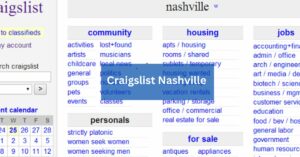From Paper to Pixels: The Rise of Time Card Apps in Modern Workplaces
In the fast-paced world of modern workplaces, the days of manually punching in and out on paper time cards are long gone. Welcome to the era of time card apps, where the traditional and the digital collide to revolutionize the way we track and manage our work hours.
But what exactly is driving this shift from paper to pixels? What benefits do these apps offer? And how can a time card app reshape the way we work?
Join us as we explore the rise of time card apps in modern workplaces and uncover the exciting possibilities they bring to the table.
Key Takeaways
- Time card apps streamline processes, increase accuracy, and provide convenient access to work hours.
- Integration with payroll systems simplifies payment management and ensures compliance with labor laws.
- Automated calculations, real-time tracking, and accountability features enhance accuracy, transparency, and accountability.
- Customization options and flexibility features cater to specific requirements and accommodate different work arrangements.
The Evolution of Time Tracking
In modern workplaces, time tracking has undergone a significant evolution, revolutionizing how you record and manage your work hours. Gone are the days of manually punching in and out on a time clock or filling out cumbersome paper timesheets. The advent of time card apps has streamlined the process, making it more efficient and accurate.
With the rise of technology, time card apps have become the preferred method of tracking work hours. These apps allow you to easily clock in and out with just a few taps on your smartphone or computer. They also provide features such as GPS tracking, which ensures that you’re physically present at your designated workplace when recording your hours.
Moreover, time card apps have eliminated the need for manual calculations. They automatically calculate the total number of hours worked, taking into account overtime, breaks, and different pay rates. This not only saves you time but also reduces the risk of human error.
Additionally, time card apps offer convenience and accessibility. You can access your work hours and any related information anytime and anywhere. This is particularly advantageous for remote workers or those with flexible work arrangements.
Benefits of Time Card Apps
Time card apps offer numerous benefits to both employees and employers alike. Here are three reasons why you should consider using a time card app in your workplace:
Increased Accuracy: With time card apps, the chances of human error in time tracking are significantly reduced. Employees can easily clock in and out with just a few taps on their smartphones, ensuring accurate time recording. This eliminates any discrepancies or disputes that may arise from manual timekeeping methods.
Efficient Time Management: Time card apps allow employees to track their work hours in real-time, providing them with a clear overview of their daily, weekly, and monthly schedules. This helps employees manage their time more effectively, enabling them to prioritize tasks, meet deadlines, and improve overall productivity.
Streamlined Processes: Time card apps streamline the entire time tracking and attendance management process. They automate tasks such as calculating hours worked, overtime, and leave balances, reducing the administrative burden on employers. This frees up valuable time and resources, allowing employers to focus on more strategic aspects of their business.
Streamlining Payroll Processes
To streamline payroll processes, consider using a payroll software that automates calculations and simplifies the payment management system. Payroll is an essential function in any organization, and it’s crucial to have an efficient and accurate system in place.
Manual payroll processes can be time-consuming, prone to errors, and require significant administrative effort. By implementing a payroll software, you can simplify the entire payroll process and save valuable time and resources.
A payroll software automates calculations, such as employee salaries, taxes, and deductions, eliminating the need for manual computations. This not only reduces the chances of errors but also ensures accurate and timely payments to employees.
Additionally, it streamlines the process of managing employee information, such as banking details and tax forms, making it easier to track and update payment information.
Furthermore, a payroll software simplifies the payment management system by providing a centralized platform to handle all payroll-related tasks.
You can easily generate pay stubs, track hours worked, and manage employee benefits and leave requests. It also enables you to automate the process of filing taxes and generating reports, saving you from the hassle of manual paperwork.
Enhancing Accuracy and Accountability
Consider implementing a payroll software to improve accuracy and accountability in managing employee payments. With the rise of time card apps in modern workplaces, it’s crucial to enhance the accuracy and accountability of payroll processes. Here are three reasons why implementing a payroll software can help you achieve this:
Automated calculations: Payroll software eliminates the risk of manual errors that can occur when calculating employee payments. By automating the calculations, you can ensure accurate and consistent results every time, reducing the chances of mistakes that could lead to disputes or legal issues.
Real-time tracking: A payroll software allows you to track employee hours and attendance in real-time. This feature ensures that you have up-to-date information on employee work hours, making it easier to accurately calculate wages and manage overtime. Real-time tracking also enhances transparency and accountability, as employees can access their own time records and verify their accuracy.
Audit trail: Payroll software provides an audit trail that documents any changes made to employee records or payment details. This audit trail helps maintain accountability by keeping a record of who made the changes and when they were made. It ensures that any modifications are transparent and can be easily traced, reducing the risk of unauthorized alterations or fraudulent activities.
Integration With Payroll Systems
Integrating payroll systems with time card apps can streamline and automate the process of managing employee payments. By seamlessly connecting these two systems, you can eliminate the need for manual data entry, reduce errors, and save time.
With the integration, employee hours and wages can be automatically transferred from the time card app to the payroll system, ensuring accuracy and efficiency.
One of the key benefits of integrating payroll systems with time card apps is the elimination of duplicate data entry. Instead of manually inputting the hours worked by each employee, the time card app can directly transmit the data to the payroll system. This not only saves time but also minimizes the risk of human error.
Furthermore, integrating these systems allows for real-time monitoring of employee hours, ensuring compliance with labor laws and company policies. Managers can easily track attendance, overtime, and time-off requests, all in one centralized platform. This visibility enhances transparency and accountability, creating a fair and efficient work environment.
In addition, integrating payroll systems with time card apps simplifies the process of generating payroll reports and calculating employee wages. With accurate and up-to-date data readily available, payroll administrators can calculate salaries, deductions, and benefits with ease. This reduces administrative burden and ensures that employees are paid accurately and on time.
Remote Work and Time Card Apps
With the rise of remote work, time card apps have become even more essential for tracking and managing employee hours. As more companies embrace telecommuting and flexible work arrangements, the need for accurate time tracking has increased. Here are three reasons why time card apps are crucial for remote work:
Efficiency: Time card apps streamline the process of recording and tracking employee hours. By allowing employees to clock in and out remotely, these apps eliminate the need for manual time cards or spreadsheets. This saves time for both employees and managers, allowing them to focus on more important tasks.
Transparency: Remote work can sometimes make it challenging for managers to monitor employee productivity. Time card apps provide a transparent way to track the hours worked by remote employees. Managers can easily access real-time data on employee attendance, breaks, and overtime, ensuring accountability and preventing time theft.
Flexibility: Remote work often comes with flexible schedules. Time card apps accommodate this flexibility by allowing employees to record their hours whenever and wherever they work. Whether they’re working from home, a coffee shop, or a coworking space, employees can easily log their hours through mobile or desktop applications.
Customization and Flexibility
To enhance functionality and meet the unique needs of different workplaces, time card apps offer customization and flexibility options. These features allow businesses to tailor the app to their specific requirements, ensuring a seamless integration into their existing systems and processes.
With customization options, you can easily modify fields, labels, and settings to align with your organization’s terminology and workflows. This ensures that employees can easily understand and navigate the app without any confusion or learning curve.
Flexibility is another key aspect of time card apps. These apps offer various features that can be adapted to accommodate different types of work arrangements, such as flexible schedules, remote work, and shift-based work.
You can easily set up custom rules and settings to accurately track and calculate time, regardless of the work arrangement. This flexibility also extends to reporting and analytics, where you can generate customized reports to gain insights into employee productivity, attendance, and time allocation.
Moreover, time card apps often integrate with other business systems, such as payroll and project management software, further enhancing their flexibility and customization capabilities. This integration allows for seamless data transfer and eliminates the need for manual data entry, reducing errors and saving time.
Future Trends in Time Card Apps
One exciting development in the world of time card apps is the emergence of future trends that are shaping the way businesses track and manage employee time. These trends are designed to enhance efficiency, improve accuracy, and provide more flexibility in time tracking.
Here are three key future trends to look out for:
Artificial Intelligence (AI) Integration: Time card apps are increasingly incorporating AI technology to automate time tracking processes. AI algorithms can analyze patterns in employee behavior and accurately calculate work hours, eliminating the need for manual input. This not only saves time but also reduces the risk of errors and ensures fair and accurate payments.
Mobile Accessibility: With the rise of remote work and the growing reliance on mobile devices, time card apps are becoming more accessible on smartphones and tablets. This allows employees to conveniently track their time from anywhere, at any time. It also enables employers to monitor and manage employee attendance in real-time, regardless of their location.
Integration with Payroll Systems: To streamline the payroll process, time card apps are integrating with payroll systems. This integration eliminates the need for manual data entry and ensures that employees are accurately compensated for their work. By automatically transferring time tracking data to the payroll system, businesses can save time, reduce errors, and improve overall payroll efficiency.
These future trends in time card apps are revolutionizing the way businesses track and manage employee time, making the process more efficient, accurate, and convenient for both employers and employees.
Conclusion
So, whether you’re a small business owner or an employee, it’s clear that time card apps have revolutionized the way we track and manage our work hours. With their benefits such as streamlining payroll processes, enhancing accuracy, and integration with payroll systems, these apps have become essential tools in modern workplaces.
As remote work becomes more prevalent, time card apps also offer the flexibility and customization needed to adapt to changing work environments. As technology continues to advance, we can expect even more exciting developments in the future of time card apps.





